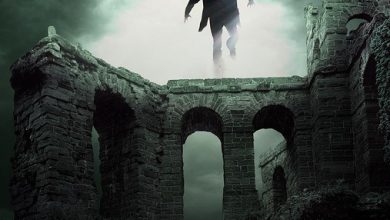“The Celestial Railroad” by Nathaniel Hawthorne is a brilliant allegorical tale that delves into the complex interplay between spiritual enlightenment and the allure of modernity and materialism during the 19th century. Hawthorne masterfully weaves together a captivating narrative filled with rich symbolism, social commentary, and moral introspection, making it a timeless piece of literature that remains relevant to this day. It serves as an enduring reminder to embrace the hardships and temptations of life, as they are integral to the process of genuine spiritual growth and self-discovery.
The Celestial Railroad | Summary
The protagonist embarks on an enthralling pilgrimage from the city of Destruction to the Celestial City. Eager to explore and endowed with ample leisure, the narrator’s journey takes an intriguing turn when he encounters the enigmatic Mr. Smooth-it-away, a native of Destruction, who paradoxically boasts knowledge of the Celestial City despite never setting foot there. Introduced to the captivating allure of a shortcut by the charismatic Mr. Smooth-it-away, the narrator succumbs to the temptation, forsaking the traditional path to the Celestial City. Accompanied by a fellow pilgrim named Christian, they confront myriad obstacles and temptations along their expedited journey, testing their resolve and virtue.
Their voyage commences aboard a train that passes by revered landmarks like the Slough of Despond, the House of the Interpreter, the Palace Beautiful, and the Valley of the Shadow of Death. However, these significant locales remain unvisited, as the train relentlessly steers towards its destination.
Amidst their travels, the story shifts its focus to the bustling town of Vanity, renowned for its prosperity and the illustrious Vanity Fair. Here, the pilgrims find themselves enticed by worldly pleasures, with the new railroad bringing unprecedented trade and opulence, blurring the boundaries between the townsfolk and the pilgrims.
The journey takes a transformative turn when they confront the Valley of Humiliation, compelling them to confront their own vulnerabilities and shortcomings. They encounter the deluded Ignorance, who adamantly believes in reaching the Celestial City through an alternative, unproven route. Amidst the arduous voyage, the travelers discover respite and encouragement at the scenic Delectable Mountains. In the company of the optimistic Hopeful, they find newfound strength to persevere towards their ultimate destination.
As their journey approaches its climax, they disembark from the train, anticipating a ferry boat that will carry them across the river to the Celestial City. However, the true nature of Mr. Smooth-it-away is unmasked when he reveals himself to be a malevolent impudent fiend, never intending to join them on their sacred quest. The startling revelation awakens the narrator from what he now recognizes as a dream, realizing the profound lessons and moral insights gleaned from his otherworldly experience.
The Celestial Railroad | Analysis
The overall tone of the story is both critical and satirical. The writer employs satire to humorously and pointedly criticize various aspects of contemporary society, particularly the growing fascination with materialism and modernity. The tone oscillates between light-hearted and serious, evoking a sense of irony that underscores the incongruities and contradictions found in the characters’ pursuits and beliefs. The first-person narrative style further deepens the reader’s connection with the protagonist, allowing them to experience the journey from his perspective. At its core, the story revolves around the protagonist’s quest for spiritual salvation, which serves as a metaphor for the human desire to attain higher knowledge and divine understanding.
The emergence of the Celestial Railroad marks a significant turning point in the story, representing the advent of industrialization and technological progress during the 19th century. This modern invention epitomizes society’s growing fascination with efficiency and instant gratification. Through the railroad, the narrative skillfully critiques the pitfalls of such progress, as the allure of convenience and rapid advancement leads individuals astray from the authentic journey toward spiritual fulfillment.
The train’s journey through various stops represents the distractions and vices that lure people away from their spiritual quests. These stops serve as poignant reminders of the countless worldly pursuits that divert individuals from the pursuit of higher virtues. Each passenger boarding the train personifies the shallow desires and selfish ambitions that plague human nature, emphasizing the prevalence of materialistic values in society.
It serves as a subversive piece that challenges the dogmatic and authoritarian religiosity of its predecessor, John Bunyan’s “The Pilgrim’s Progress.” The retold narrative presents a transformation from a traditional religious discourse to a more secular, humanistic vision, focusing on worldly concerns. This shift in focus is noteworthy as it highlights the complexities and potential repercussions that such a transformation might entail.
Through the attribution of events to a dream vision, the writer emphasizes the fictional nature of the narrative, undermining the claims of absolute truth often associated with religious visions of the past. Through the narrative’s dream-like nature, the story warns against an excessive attachment to worldly comforts and achievements, urging readers not to neglect the metaphysical dimensions of existence. By presenting an ending that leaves room for interpretation, the story maintains a degree of ambiguity, preventing the work from being overly didactic or confrontational. This strategic ambiguity allows readers to engage with the story on multiple levels, prompting them to reflect on their own beliefs and values.
Through satire, the story critiques the contemporary religious movements of his time, particularly Transcendentalism and Unitarianism, for their perceived shortcomings and ambiguities. The Giant Transcendentalist, with his confusing language, represents the elusive and intangible nature of Transcendentalist teachings, the narrative seems to suggest that Transcendentalists’ emphasis on individual experience and intuition might lead to a lack of clear moral guidance, making it challenging for others to understand or follow their teachings.
Unitarians rejected the doctrine of the Trinity, emphasizing the unity of God and the inherent goodness of humanity. The writer represents the ticket office worker as one who embodies the mundanity of religious guidance in the face of profound spiritual questions. By relegating the guide and spiritual advisor to a mundane ticket office worker, he appears to challenge the efficacy and authority of Unitarian teachings in guiding individuals on their spiritual journeys. This suggests his dissatisfaction with what he perceives as a lack of spiritual guidance and clarity in Unitarian beliefs. This theme prompts readers to question the efficacy and authenticity of various religious movements and doctrines.
By emphasizing the consequences of individual choices and the need for moral accountability, the story also underscores the importance of staying true to one’s spiritual journey despite the allure of shortcuts and worldly distractions. The story’s themes of spiritual pilgrimage and enlightenment resonate with readers, urging them to endure life’s challenges with steadfastness and resilience in their quest for genuine spiritual growth. The conclusion of the dream sequence with Mr. Smooth-it-away’s deception plays a crucial role in the story, it highlights the importance of moral discernment in one’s journey towards spiritual fulfillment. His actions serve as a cautionary example of the dangers of blindly following charismatic individuals who may lead others astray from their true spiritual path. The story thus illustrates the potential consequences of prioritizing material gains, convenience, and personal interests over genuine spiritual growth and authenticity.
The Celestial Railroad | Themes
The story explores several interconnected themes, each carefully woven into the fabric of the narrative to deliver profound social and moral commentary. Through allegory and satire, the story addresses the changing religious and philosophical landscape of 19th-century America, while also critiquing the allure of modernity and materialism.
At its core, the story revolves around the protagonist’s spiritual pilgrimage towards the Celestial City, symbolizing the quest for enlightenment and divine understanding. This theme reflects the universal human desire to attain higher knowledge, moral growth, and spiritual fulfillment. The narrative portrays the journey as challenging and fraught with temptations, emphasizing the importance of perseverance and the willingness to endure hardships on the path to self-discovery.
The celestial railroad is used as a symbol of modernity and technological progress, critiquing the growing fascination with efficiency, instant gratification, and material wealth during his time. The allure of the railroad represents the temptation to take shortcuts in life and embrace superficial values, ultimately leading individuals away from genuine spiritual growth and true happiness. This theme serves as a cautionary tale against sacrificing deeper values for the sake of convenience and worldly gains.
The story makes numerous references to John Bunyan’s “The Pilgrim’s Progress,” a Christian allegory of spiritual journey and salvation. By reimagining characters and events from the original work, Hawthorne adds depth and layers of meaning to his narrative. Evangelist, Apollyon, and the Valley of Humiliation all carry symbolic significance, further enriching the thematic exploration of spiritual growth and moral challenges. Beyond its religious themes, the story also offers a scathing social critique. The story satirizes modern business practices, public relations, aggressive promoters, and the pursuit of profit at the expense of higher values. It underscores the dangers of prioritizing materialistic gains over genuine human connection, compassion, and ethical behavior.
The Celestial Railroad | Title
The word Railroad adds a fascinating layer of modernity and innovation to the title. Railroads were revolutionary technological advancements during the time this literary piece was written, propelling society into an era of rapid transportation and industrialization. They symbolize progress, efficiency, and the drive to conquer physical obstacles and distances. In the story, the Celestial Railroad is a modern invention, promising a fast and effortless passage to the Celestial City, thereby contrasting the traditional, arduous, and spiritually enriching journey depicted in John Bunyan’s “The Pilgrim’s Progress.” By combining the celestial with the technological, the title juxtaposes the spiritual with the material, drawing attention to the dichotomy between worldly advancements and the pursuit of higher virtues. It also foreshadows the kind of journey the characters in the story would choose to embark on.
The Celestial Railroad | Character Sketch
The narrator serves as the story’s central character and protagonist. He embarks on a spiritual pilgrimage towards the Celestial City. He embodies the common individual seeking spiritual fulfillment amidst the challenges and temptations of earthly existence. Initially hesitant to board the Celestial Railroad, the narrator represents the struggle between traditional values and the allure of modernity. Throughout the journey, he displays a sense of curiosity and open-mindedness.
The Celestial Railroad | Literary Devices
The Celestial Railroad itself symbolizes technological progress and modernity, luring individuals away from the challenging path of spiritual enlightenment. The Celestial City represents Heaven or spiritual salvation, while the desolate landscape and various stops along the railroad symbolize the trials and temptations of earthly life. The story’s use of satire is evident throughout as the writer humorously mocks and criticizes the societal trends, religious movements, and modern values of his time, representing the shallow and materialistic nature of some contemporary beliefs and attitudes, providing a scathing critique of society’s moral complacency.
Irony is skillfully employed to highlight the contrast between appearance and reality. The characters’ names, like the ticket office worker being called Evangelist, create an ironic juxtaposition, as they fulfill roles contrary to their traditional associations.
The story employs vivid imagery to paint a vivid picture of the story’s landscapes and characters. The fantastical scenes on the Celestial Railroad, with its speeding trains and luxurious stops, evoke a surreal and otherworldly atmosphere. The narrative cleverly employs allusion, referring to John Bunyan’s “The Pilgrim’s Progress” as a foundation for his own allegorical tale. By alluding to this classic work, the writer draws on its religious symbolism and themes while putting his own unique spin on the narrative to critique and satirize contemporary religious movements.
Concluding thoughts
Hawthorne constructs a compelling and intricate story that critiques religious dogma, societal values, and the allure of modernity. This literary finesse contributes to the enduring relevance and impact of the story on readers, encouraging introspection and reflection on timeless themes and human nature.



